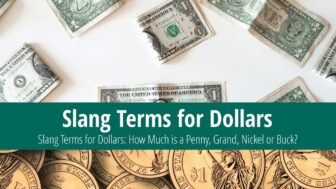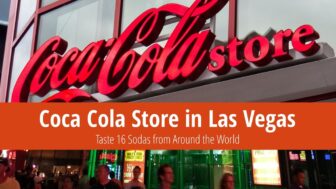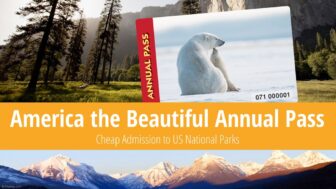From my personal experience, driving in America is much easier than in our country. The roads are generally well-maintained, signage is clear, and every gas station offers several types of coffee. What is the maximum speed limit in the USA, when can you turn on red, and which roads are tolled? In this article, you will find everything you need to know about driving in the USA.

-
Table of Contents
Basic Traffic Rules in the USA
➡️ Driving Side in the USA
In the USA, like in most countries worldwide, people drive on the right-hand side.
🪪 Driver’s License for the USA
A category B driver’s license is sufficient for driving a personal car in the USA. Police officers and car rental companies accept European licenses 99% of the time. However, I recommend applying for an International Driver’s License before traveling.
🔞 Renting a Car in the USA for Drivers Under 25
Car rentals in the USA for drivers under 25 years old often come with a surcharge of $15.00 to $25 per day. This fee is due to the higher risk of accidents.
🦺 Seatbelt Requirements in the USA
All passengers in a car must wear seatbelts while driving.
🌉 Toll Roads and Fees
Some highways and roads require toll payments. Tolls are more common on the East Coast, while on the West Coast, fees are usually charged for crossing certain bridges or tunnels. A list of tolled roads can be found on PlatePass.com.
🍷 Blood Alcohol Limit for Driving in the USA
The legal blood alcohol concentration (BAC) limit in the USA is 0.08. If you stay within this limit, you can legally drive. There are two exceptions: in Utah, the limit is 0.05 BAC, and for drivers who are not of legal drinking age, a zero-tolerance policy is generally applied.
Note: The BAC measurement of 0.08 roughly corresponds to 0.8‰ (per mille) blood alcohol content. A detailed list of BAC limits by state can be found on FindLaw.com.
-
Differences Between Driving in the USA and Other Countries
📏 Imperial Units Are Used
In the USA, distances on road signs are displayed in miles, and speed is measured in miles per hour (mph). One mile equals 1.609 km, and 100 yards equals 91.44 meters.
Gasoline is sold at gas stations in gallons. One gallon equals 3.785 liters. Fuel consumption is expressed as the number of miles driven per US gallon (miles per gallon or mpg). To convert mpg to l/100 km, divide 235 by the mpg value.
🚗 Automatic Transmission Is Common
Nearly all cars sold and rented in the USA have automatic transmissions. Cars only have a brake pedal on the left and a gas pedal on the right, making driving more convenient and easier. If you are not used to driving an automatic, rest assured that you will adapt quickly. Read the article how to drive an automatic for more information.
🔦 Daytime Running Lights Are Not Mandatory
In most states in the USA, it is not mandatory to use daytime running lights unless visibility is reduced or it is getting dark. More details can be found on VehicleAid.com.
🚦 Traffic Lights Are Placed After the Intersection
A noticeable difference in the USA is that traffic lights are positioned after the intersection. You will quickly get used to this. After a red light, green appears directly. After green, yellow follows, and then red.
❌ Intersections Without Standard Right-of-Way
At some intersections, you may encounter a “4 Way” or “All Way” sign. At these intersections, the right-of-way is not given to the vehicle on the right, but instead, vehicles proceed in the order they arrived at the intersection.
🔴 Turning Right on Red Is Allowed
At signalized intersections, you can turn right on a red light, but you must yield to traffic approaching from the left.
This rule does not apply in New York City, where turning on red is only permitted when a sign says “Right Turn Permitted on Red.” In contrast, signs such as “No Turn on Red” or “Right Turn Signal” prohibit turning on red, requiring you to follow the arrow signal.
⛽ Gas Must Be Paid for in Advance
At most gas stations, you are required to pay for gas before pumping. Some stations are self-service, and at others, you insert your payment card into the pump. Instructions can be found in the article how to refuel in the USA.
➡️ Passing on the Right Is Allowed
On highways and roads with multiple lanes, passing on the right is allowed. American drivers often do not use turn signals when changing lanes, so be cautious. Signs like “Slow Traffic Keep Right” require slower vehicles to stay in the right lane.
2️⃣ Carpool Lane for 2 or More Passengers
In Los Angeles and other major cities, you may encounter lanes marked with a diamond symbol or labeled “Pool Only.” These are reserved for vehicles with at least two passengers, allowing them to avoid traffic jams.
Driving in a carpool lane with only one passenger is subject to a high fine, starting at $490 in California (as of January 2025). It is also prohibited to cross the yellow line marking the carpool lane. You may enter or exit the lane only where the line is broken, usually near intersections.
🚌 Passing a Stopped School Bus Is Strictly Prohibited
Passing a stopped school bus with flashing lights is strictly forbidden. The fine for this offense varies by state but is typically between $300 and $500. In some states, you may even face jail time.
-
Highways in the USA – Signage, Tolls, and Fees
Road numbers often include directional information: north (N), east (E), south (S), and west (W). At merge points, a zipper system is used, alternating vehicles from the left and right lanes. Americans are generally accustomed to following this system.
Tolls in the USA are collected on a limited number of highways, bridges, tunnels, or reserved lanes. For example:
- Crossing the San Francisco-Oakland Bay Bridge costs $8.00, while vehicles in the carpool lane pay $4.00 on weekdays.
- Driving on the scenic 17 Mile Drive in California costs $12.00.
In the USA, a wide variety of terms are used for different types of roads.
Causeway
A major road combining regular highways with a series of bridges, often found in wetland areas. The most famous is the MacArthur Causeway in Miami.
Expressway
A high-speed road similar to freeways, but expressways may have a limited number of level intersections.
Freeway
A highway with overpasses and underpasses, free of intersections, and no access for pedestrians or cyclists. Tolls may or may not be collected. Freeways are faster and designed to accommodate more traffic than highways.
Highway
A general term for a major road or highway within a state. Highways may have one or more lanes in each direction, and tolls may be charged. Intersections are common on highways. North-south highways have odd numbers, while east-west highways have even numbers.
Interstate
A system of interstate highways spanning the entire USA. These highways are labeled as I-10, I-75, etc.
Parkway
A road similar to a scenic drive, often serving as an access road to national and state parks. Truck access is typically restricted. Parkways are usually set in beautiful surroundings, with an emphasis on design and architecture.
Scenic Route
These are scenic roads in state and national parks. They are often narrow, and larger vehicles are usually not allowed. In winter, some may be impassable. Scenic drives typically have several stops with interesting views.
Thruway/Throughway
A tolled, grade-separated highway. In some cases, only trucks must pay tolls.
Turnpike
A term used for toll highways in the USA.
-
Maximum Speed Limits in the USA
The maximum speed limits vary between states in the USA.
Compared to Europe, speed limits in the USA may seem low. Only one highway segment in Texas allows a speed of 85 mph (137 km/h). On highways in the eastern USA, the typical speed limit is 70 mph (113 km/h), while on western highways, it is usually 75 mph (121 km/h).
Exceeding the speed limit by approximately 10 mph is often tolerated, but this depends on local jurisdiction and the officer. Significant violations can lead to a court summons as early as the next day. The average fine for speeding in the USA is $150.
On county roads, speed limits range from 55 mph to 70 mph, while in residential zones, the limit is between 15 mph and 45 mph. Speeding fines are often a significant source of income for smaller towns, and speed checks are frequent.
-
Traffic Signs in the USA
Colors of Traffic Signs
Roads in the USA are very well marked, with colors and shapes of traffic signs following clear rules.
- Red is used for stop signs, yield signs, and prohibitions.
- Green is reserved for navigation signs, directional boards, or highway exit markers.
- Blue indicates services for motorists, such as gas stations, campsites, or restaurants.
- Yellow serves as a warning—for example, approaching an intersection, traffic signals, or speed bumps.
- White signs with black text are used for additional information or explanations.
- Orange signifies detours and warnings related to roadworks.
- Fluorescent Yellow-Green marks pedestrian crossings, bike paths, and school zones.
- Pink (coral red) portable signs warn of accidents, natural disasters, or floods.
- Brown directs travelers to tourist attractions, landmarks, and campsites.
Shapes of Traffic Signs
The shapes of traffic signs also follow a logical pattern.
- Rectangle is used for directional signs and signs with restrictions.
- Octagon exclusively marks red stop signs.
- Triangle with the point facing downward indicates “Yield.”
- Diamond always signals a warning or reduced speed.
- Pentagon warns of school zones or pedestrian crossings near schools.
- Pennant, resembling a stretched triangle, indicates no passing zones.
- Circle with a black cross alerts you to a nearby railway crossing, while a red circle signifies prohibition.
Additional Signs on Traffic Boards
Traffic signs are often accompanied by additional panels, requiring a basic understanding of English. Abbreviations are frequently used for instructions.
- ◊ CAR POOLS ONLY designates a lane for vehicles with two or more passengers. In the USA, it’s common for vehicles to have only the driver, leading to traffic congestion. If a lone driver uses this lane, they face a fine.
- 4 WAY or ALL WAY is found on stop signs, indicating vehicles leave the intersection in the order they arrived.
- BUMP or SPEED BUMP warns of a bump or speed hump.
- CAUTION warns of danger or risk.
- DETOUR indicates a detour.
- NO TURN ON RED cancels the option to turn right on red.
- ONE WAY marks a one-way street.
- PED XING or XING indicates a pedestrian crossing.
- WORK AREA notifies drivers of roadworks.
-
Parking in the USA
I recommend primarily using designated and monitored parking lots, where your vehicle is under supervision. Street parking rules are determined by traffic signs and curb colors.
⬜ White Curb
Parking is allowed unless prohibited by a sign. This also applies to curbs without any markings.
🟩 Green Curb
Parking is allowed for a limited time, typically indicated on a sign or directly on the curb.
🟨 Yellow Curb
Stopping is allowed only for loading or unloading passengers. The driver is usually required to stay in the vehicle.
🟥 Red Curb
Parking is prohibited. A red curb may also signify no stopping when paired with the appropriate sign.
🟦 Blue Curb
Parking is reserved for disabled drivers with the appropriate placard displayed on their vehicle.
-
What to Do If You Are Stopped by Police in the USA
American police officers will follow your car and flash their lights if you exceed the speed limit or commit another traffic offense.
You are required to immediately pull over to the side of the road and calmly wait with your hands resting on the steering wheel until the officer approaches. Nervous behavior or rummaging through your glove compartment or purse will only worsen the situation.
The officer will stop behind you, get out of their car, and ask for your driver’s license and vehicle documents through the open window. While the process may seem strict, it is crucial to follow the officer’s instructions. If you have not broken the law, there is no need to worry.
How Much Does It Cost to Rent a Car in the USA?
- No Hidden Fees
The prices stated at the time of reservation are always final, providing a clear overview of your expenses. - Lowest Price Guarantee
If you find the same deal at a lower price elsewhere, RentalCars will refund the difference. - Cancellation Is Free of Charge
Most bookings can be cancelled or altered free of charge up to 48 hours before collection.

 10 Best Photo Places in the USA
10 Best Photo Places in the USA






Discussion (1)
In California, the regulations are followed. There are exceptions, of course. Drivers here are much more considerate than here. The zipper works perfectly. Experience: just for the sake of being polite, I wanted to let two cars go when zipping and I thought I was an idiot who didn’t know how to zip. You can drive on a nice straight road under the speed limit, but because it’s full of cars and the Americans just won’t pass and wait for you to move – it’s mandatory if there’s a queue behind you. On an eight-lane highway, you can easily get from the eighth lane to the first. Probably the only thing that is lacking here is the flashing at junctions in the turning lanes, when overtaking it usually works. There are more differences than that.